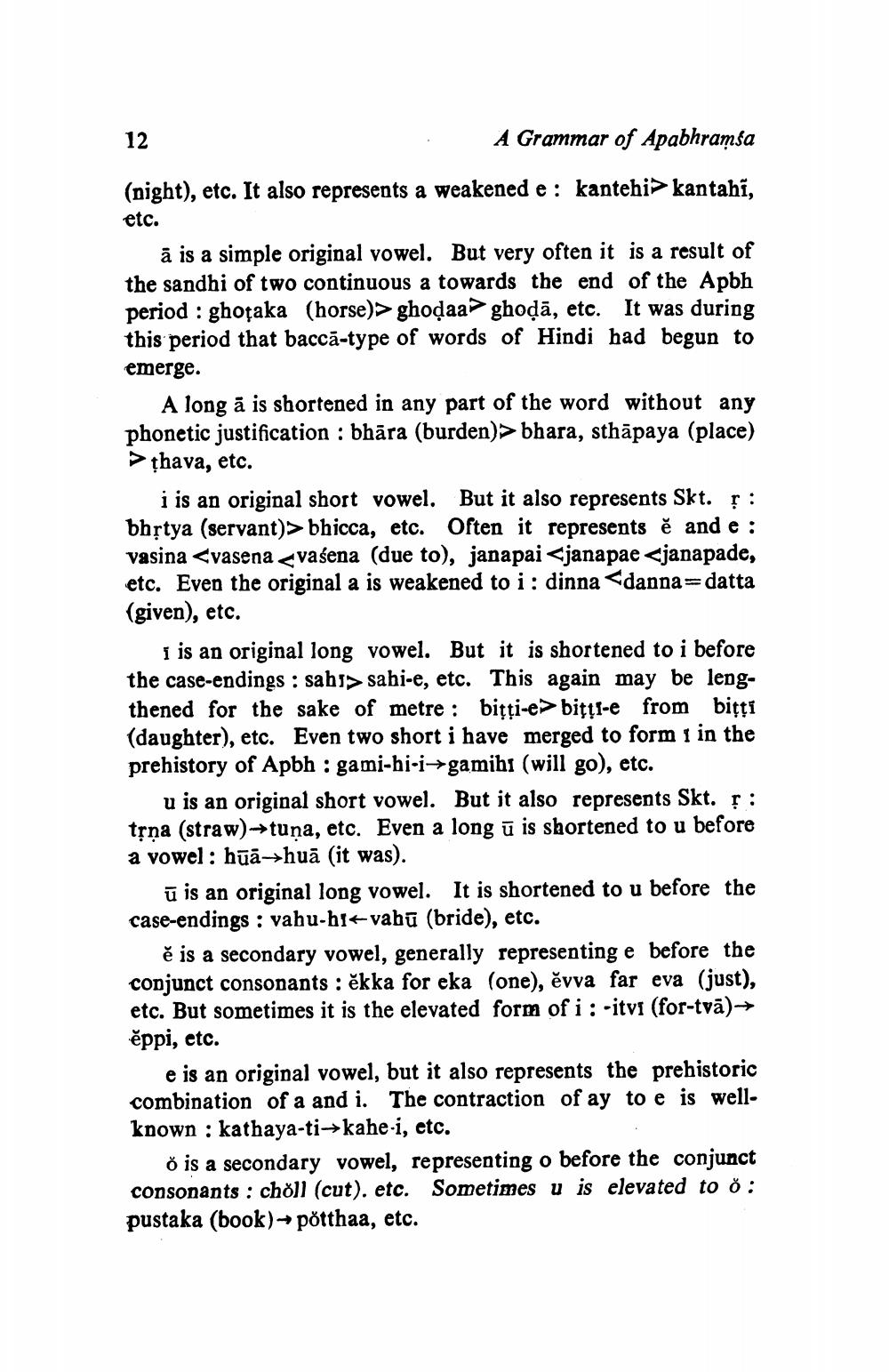________________
12
A Grammar of Apabhramsa (night), etc. It also represents a weakened e : kantehi> kantahi, etc.
ā is a simple original vowel. But very often it is a result of the sandhi of two continuous a towards the end of the Apbh period : ghotaka (horse)> ghodaa ghodā, etc. It was during this period that baccă-type of words of Hindi had begun to emerge.
A long ā is shortened in any part of the word without any phonetic justification : bhāra (burden)> bhara, sthāpaya (place) >thava, etc.
i is an original short vowel. But it also represents Skt. ș: bhṛtya (servant)> bhicca, etc. Often it represents ě and e : vasina <vasena <vaćena (due to), janapai <janapae <janapade, etc. Even the original a is weakened to i : dinna <danna=datta (given), etc.
i is an original long vowel. But it is shortened to i before the case-endings : sabı> sabi-e, etc. This again may be lengthened for the sake of metre: bițți-e> bițți-e from bitti (daughter), etc. Even two short i have merged to form i in the prehistory of Apbh : gami-bi•i-gamibi (will go), etc.
u is an original short vowel. But it also represents Skt. ?: tņņa (straw) ►uņa, etc. Even a long ū is shortened to u before a vowel : hūāhuā (it was).
ū is an original long vowel. It is shortened to u before the case-endings : vahu-hi+vabū (bride), etc.
ě is a secondary vowel, generally representing e before the conjunct consonants :ěkka for eka (one), ěvva far eva (just), etc. But sometimes it is the elevated form of i: -itví (for-tva) + ěppi, etc.
e is an original vowel, but it also represents the prehistoric combination of a and i. The contraction of ay to e is wellknown : kathaya-ti-kahe-i, etc.
• is a secondary vowel, representing o before the conjunct consonants : chờll (cut). etc. Sometimes u is elevated to Ó : pustaka (book)- potthaa, etc.




